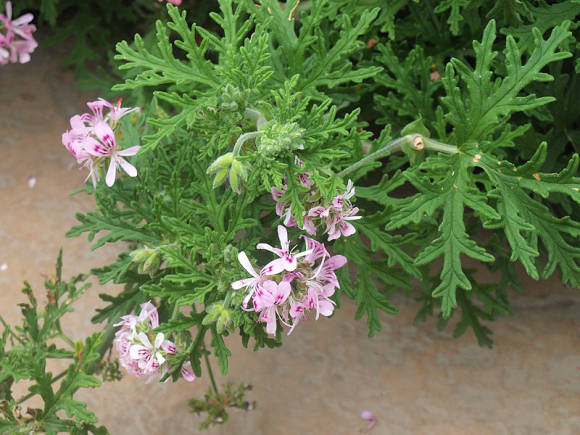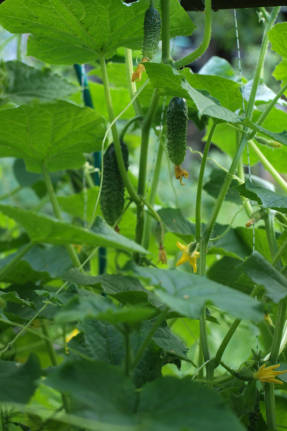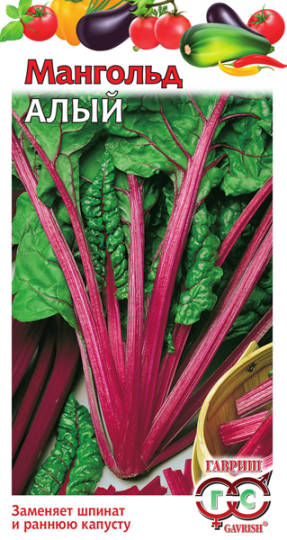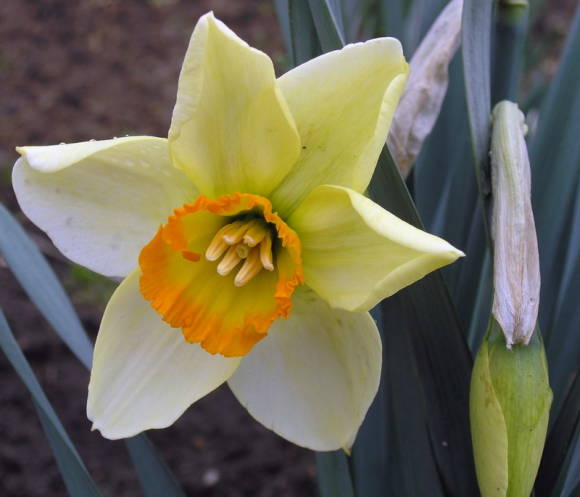Le Nôtre - creator of the regular French park
 |
The classic style of park design originates from Italy in the 16th century, from where it came to France. Thanks to Le Nôtre, the beauty and grandeur of the classic regular park reached its climax, and such parks began to be called French.
André Le Nôtre (1613-1700) continued the dynasty of gardening masters, who from childhood instilled in him the ability to find and emphasize beauty in the surrounding nature. Preparing to replace his father as chief gardener of the Tuileries Park, André studied mathematics, painting, architecture, optics and other sciences necessary in the work of a park builder. From 1645 to 1693 Le Nôtre served as the chief royal builder of gardens and parks.During this period, he created most of his unforgettable works - the parks of Vaux-le-Vicomte (1657-1661), Versailles (1661-1693), Fontainebleau (1661), Saint-Germain (1663), Tuileries (1664-72), district Champs Elysees in Paris (1667), Clagny (1674) and the Luxembourg Gardens in Paris. The courtiers and members of the royal family eagerly invited him to work on their gardens and parks. This is how the park of Chantilly (1663-84, possession of the Dukes of Condé) and Choisy (1693, possession of the Duchess of Montpensier), Saint-Cloud (1658, possession of the king's brother), Sault (1670-1683, possession of the Minister of Finance Colbert) and Meudon (1680, possession of Minister of War Louvois). The last work of Le Nôtre was the Royal Park of Marly (1692).
In 1657, Le Nôtre was promoted to general controller of buildings, which greatly expanded his responsibilities. His successes were marked by two orders (St. Michael and St. Lazarus) and hereditary nobility. On the coat of arms of the newly-born nobleman, a head of cabbage and three snails proudly flaunted.
Over time, Louis XIV became jealous, he began to annoy the work of Le Nôtre for customers, including foreign ones. In 1693, Le Nôtre retired from business and resigned, referring to his age, so as not to quarrel with the king.
Over the years, he gained experience and improved his skills. Park So (Sceauх) became one of his most striking works.
In 1670, Louis XIV's finance minister, Colbert, acquired the estate of Sau, which was halfway from Paris to Versailles. He instructed Le Nôtre to break up the park in the new estate, who was already a mature master with his own techniques and baggage of decisions. Le Nôtre brilliantly coped with the task. Getting acquainted with his creation at the present time, we will try to follow the implementation of the main stages of the construction of a classic garden using the example of So.
All plans of Le Nôtre are based on the design principles of a classic regular garden developed by him:
- subordination of details to the whole, a clear geometric plan based on an axial structure, taking into account the terrain and the orientation of objects to the cardinal points;
- proportionality, strictly sustained composition and hierarchy of the main and the secondary. The main element is a large open space, the structure of which is outlined by permanent elements - stairs, avenues, balustrades, etc .;
- the dominant position of the house in an elevated place where it is clearly visible;
- the use of long and wide perspectives, the development of open and closed perspectives, taking into account optical perception;
- strictly geometric structure of the park: all bosquets, reservoirs, flower beds, etc. structural elements must have a geometric shape - a circle, polyhedron, oval, etc.;
- use as decorative elements that emphasize the structure of the park, small architectural forms (low stairs with wide steps and parapets, mirror reservoirs without flowing water, sculptures), plants (topiary, plants in the ground, tubs and pots), as well as trellis structures for plants ...
The creation of parks required the involvement of many specialists in different fields: engineers, architects, hydraulics, sculptors, artists, gardeners, florists, etc., not counting a huge number of workers. To formulate tasks and accept the work performed, Le Nôtre had to master the basics of all the specialties used, as well as remarkable organizational and diplomatic abilities to coordinate work with the customer and manage a huge number of people. It is known that during the construction of the palace and park of Versailles in 1685, he supervised 36 thousand workers every day.
Le Nôtre began planning the garden with an analysis of the terrain and accounting for water resources, which made it possible to reduce labor costs for moving soil during the construction of terraces, parterres, amphitheaters, canals and pools. The steps of the terraces were necessarily reinforced with a stone retaining wall or an inclined earth slope.
 |
All the elevation changes were used to set up the water supply system of the estate, which provides both household needs (kitchen, household yards, laundry, stables, etc.) and watering plantings, filling pools and fountains. The water had to live and move. In Saw, the canal was laid along the riverbed, and the Octagon basin arose on the site of an old pond in a swampy lowland.
To ensure the release of water by fountains to a certain height in case of insufficient elevation difference on the ground, the water was raised to the required level using a turbine wheel, windmills, and other methods. An example of the technical advances of that time is the "Marly Machine", which was built to provide Versailles with water. A significant difference in heights and the presence of two small rivers flowing through the territory of the So estate made it possible for all the fountains to work and for all household needs without additional technical tweaks.
Laying two planning axes
After a comprehensive analysis of the terrain, it was possible to proceed to the design of the planning axes.
 |
The starting point for planning the garden was the palace. It had to be visible from any point on the parterres spreading at its foot. No trees were planted near the house, so as not to obstruct it. The main planning axis (1) was supposed to pass through the main gate of the estate, cross the palace perpendicular to the park facade of the building and go through the open space of the parterres to the horizon. In So, it is oriented from east to west to ensure maximum illumination of the parterres, and organizes the space of the main entrance, driveway, palace and parterres that open to the eyes of guests from the windows of the palace. The main axis alley is now called the Walk of Fame.
 |  |
The second planning axis of the C park, more than a kilometer long, runs from north to south, perpendicular to the main axis and parallel to the castle façade. It is now called the Duchess's Alley. Axis (2) begins with a pool near the Menagerie and ends with the Grand Cascade, which descends to the Octagon Basin.
 |  |
The octagonal pool was built in the years 1670-75. on the site of the old pond. Le Nôtre transformed the steep descent from the castle to the pool into a cascade, which descends in steps from the height and flows into the Octagon, providing a 20 m rise of the Grand Bouillon fountain stream.
The difference in height between the level of the pond and the castle is 23 m. Based on the law of communicating vessels, the height of the fountain jet can rise to the level from which it flows. Due to friction losses, the height of the water rise is somewhat reduced. In order for the jets of the fountain to be of different heights, they ensured the supply of water from sources located at the appropriate height. Various forms of fountains - in the form of a tulip, a ball, a fan, a candelabrum, a bouquet, etc. - were obtained using hydroplasia - the technology of forming jets of erupted water due to the pressure of water and the shape of the nozzle. Laying the planning axes and alleys, Le Nôtre thought through the entire visual series that would open to the viewer during a walk. The impressions should be varied and vivid, so each route was worked out as a change of scenery in a theater. Each element had its place in the harmonious picture of the general landscape. The garden was considered as a continuation of the halls of the palace. In park construction, they even used architectural terms. Here they created enfilades of bosquets, corridors of alleys, with pool mirrors and staircases of water cascades. Unlike the stable architecture of the castle, where only the interior could be changed, the structure of the park developed and changed over time in accordance with the changing wishes of the owners. Some venues were built as theater stages with ready-made scenery from the surrounding landscape, but more often they adapted the site of the existing bosquet for theatrical performances during the holiday. In such cases, everything was often changed, from the relief and hydraulic structures to plantings and decoration. Creating a number of landscapes considered by the guest, Le Nôtre selected "worthy frames" for them. Using the foreshortening effect, he complemented the view with elements that accentuate and frame the living landscape. The lower frame of the paintings was often the balustrades of the stairs and the longitudinal lines that emphasize them - lawns, steps, etc. Walls of bosquets, the edge of clipped greenery, garden arches, pergolas and trellises could serve as vertical frames. In classical gardens, an orderly arrangement of parterres is adopted: near the palace there are the brightest and most complex of them - flower, broderes, they should be clearly visible from the windows of the upper floors. As you move away from the house, the drawings of the parterres are simplified and enlarged so that they can be seen from afar. Flowers and vignettes are replaced by lawns, which are often complemented by pools and fountains. Mirrored pools are positioned so that the reflection increases the height of the surrounding trees and buildings. The grottoes, which were present in all parks of the 17th-18th centuries, symbolize the dwellings of forest and water gods and serve as a transitional element from a regular garden to forest park plantings. In Saw, the orderliness of the placement of the parterres is clearly visible. The park facade of the palace overlooks the terraces with various parterres extending to the horizon with a huge green carpet of lawn. Short perspectives were visually "lengthened" by narrowing the alleys and planting or cutting plants, which decreased in size with distance, which created the impression of a larger space. The sculpture was used to indicate open and closed perspectives, the intersection of alleys, and in fountains and grottoes - to supply water to the desired point. The Aurora Pavilion, the Small Castle and the Stables are among the oldest buildings in the estate. Pavilion of the Aurora, built in the 1670s. to house the collection of Colbert's paintings, is located in the northeastern part of the park. This is the only building of the estate that has come down to us unchanged. It is a rectangular pavilion with a rotunda in the center. The view that opens from the windows of the pavilion is emphasized by the frame of the staircase balustrade. The small castle, located in the western part of the park, was built in 1661 and served as a guest residence. This part of the park is now distinguished by a rare variety of conifers. Cedars, sequoias, cypresses grow here. A coniferous plot is adjacent to an orchard. The design of the space near the small pavilions of the estate is subject to general principles, except that the scale of the adjacent parterres decreases according to the size of the building. The Stables buildings are located to the right of the main manor gate at the beginning of the main planning axis. There are temporary exhibitions, a small shop with souvenirs and books. Having inherited the Saut estate in 1683, Colbert's eldest son, the Minister of the Navy, Marquis de Seignele (1651-1690), expanded it by purchasing neighboring plots of land.The area of the park was 100 hectares, Seignele increased it to 225 hectares. At the request of the Marquis, Le Nôtre redeveloped the entire estate, including the previously equipped part. On the final plan, we see four axes, forming a rectangle when they intersect with axes extending far beyond its sides (see above Plan of the expanded Co estate). To the two existing ones, a third axis was added, perpendicular to the main planning axis, the main element of which was the Grand Canal. The last fourth axis runs parallel to the main axis at a considerable distance from it through the Octagon basin, the central extension of the Grand Canal and the green parterre of Chatenay. The palace took its place in the northeast corner of the rectangle. This arrangement of the axes was dictated by the terrain. The river bed in a deep ravine was straightened and transformed into the Grand Canal 1140 m long. During the work, two rivers were taken into pipes and diverted to Chaten, the delta was drained and planted with 10 rows of elms, which were later replaced by Italian poplars. In 1995, the poplars growing along the canal began to be replaced due to their aging, and the December 1999 hurricane broke most of them. In 1686, according to the project of the royal architect Mansar, the Greenhouse was built in the northeastern part of the estate, to the left of the main gate. Despite its name, this vast space was intended, first of all, to house the art collection of the Marquis Seignele and receptions, and only secondly - to keep thermophilic plants and their winter overexposure. As befits the Orangerie, the southern facade of the building is decorated with tall arched windows that provide maximum illumination. The windows of the Orangery now overlook a small rose garden, edged around the pergolas with climbing roses, and a flower parterre of wondrous beauty, recreated by the hands of modern masters. During the Franco-Prussian War of 1870-71. the east wing and two adjacent spans of the building were damaged and collapsed, as a result the symmetry of the building was lost, as well as half of its area. Now the original statues that once adorned the park are exhibited here, as well as concerts and conferences. Le Nôtre reworked all the parterres in front of the palace. They were continued by a huge green carpet spread over the newly annexed lands. The area of the regular garden and forest plantations with inscribed lawns was increased. The construction of the park, begun by Colbert in 1671, was completed 20 years later, when the construction of the Grand Canal was completed. After the completion of construction work, they proceed to the design of the park. The park is a living ecosystem in which plants are subject to the changing seasons, their own vegetative cycle, and simply aging. Since the customer always expects to receive, as a result of construction, a ready-made park with shady alleys, flower parterres, decorative bright greenery, Le Nôtru, who knew that his brainchild would reach its prime in a few years, had to create the first impression of the park due to small architectural forms: stairs, pools, sculptures, etc. To designate a future alley, to create a structure of rows or a border of bosquets, some of the plants were planted already large. Very few of them took root, the wilted ones were subject to immediate replacement. Such plantings were necessarily duplicated by young plants that did not grow up in the best conditions, shaded by large neighbors, which they subsequently replaced. Soil fertility did not play a role in the planning of the garden. The depth of the fertile layer was determined by digging holes and carefully examining the plants growing in the area. The lack of favorable conditions affected the survival rate and growth of plantations. Of the trees, elms, lindens, beeches, yews and hornbeams from the surrounding forests, acacias and chestnuts brought from Turkey were most often used for planting.The alleys were neatly trimmed, carefully aligning the vertical along the alley and the tops of the trees in height. Given the optical distortion of the object due to perspective, Le Nôtre compensated for it by resizing. For example, to make the terrace look square from a distance, it should be trapezoidal. The perspective effect was used by Le Nôtre in Sau, where the parallel alleys of a large green carpet on the main axis take the form of a bell from afar. In addition, Le Nôtre used the effect of foreshortening (remember the photographs where a monument stands far behind on the palm of the subject) when “mounting” his living pictures. If necessary, he compensated for the effect of foreshortening by proportionally lengthening the figures in the background. He also used the phenomenon of anamorphosis, when the vignettes of the parterre drawing from a certain point of view were folded into the coat of arms, symbol or monogram of the owner. Le Nôtre did not like flower parterres, which required huge expenses and meticulous care. Carpets of flower parterres and broderie parterres covered the “ceremonial halls” of the garden near the palace, the walls of the bosquets were formed from trimmed trees, tall shrubs or plants, braiding the wooden lattice of the walls. The white marble of the sculptures smoothly passed from the halls of the palace to the parterres, mixing with the green sculpture of the topiary. The play of light and water emphasized the luxury of the park. In the XVII-XVIII centuries. there were not many decorative flowers in France. Their assortment was scarce, and their colors were not bright (pink, yellow, white and purple). Flowers were usually delivered from Provence. For example, to decorate Versailles in 1686, 20,050 yellow daffodil bulbs, 23,000 cyclamens and 1,700 lilies were used. Only tulips, which were purchased in Holland, were distinguished by a large varietal variety. Flowers were planted in pots, from which new drawings of flower parterre under the windows of the palace were easily collected. Thus, drawings of flower parterres were updated in Versailles daily, and during the holidays - several times a day. In addition, the potted content made it possible to quickly replace the withered plant. By the middle of the 18th century. plants brought from distant expeditions became available to the French. During the reign of Louis XV, who was fond of botany, collecting rare plants became fashionable, for which they began to build greenhouses. Rare plants (such as anemones, carnations, common and yellow daffodils, primroses, Eglantine roses, cherry laurels, foxgloves, etc.) were exchanged. Exotic plants (mulberry, mastic and orange trees, oleanders, holly, evergreen viburnum, etc.) acclimatized or removed tubs with them in the greenhouse for the winter. Evergreens - the pines, spruces, yews, evergreen oaks so prized by Le Nôtre - were used to mark the boundaries and corners of the garden's planning elements, which made it possible to keep the structure of the park visible during the winter season. Under Le Nôtre, topiary and trellis art developed rapidly, which made it possible to give plants a non-standard shape. He developed topiary haircuts specifically for the parks of Versailles. Playing the role of green sculptures, they remained an organic part of nature. In 1699, the castle passed to the Duke of Maine, the illegitimate son of Louis XIV, at this time a menagerie pavilion was being built in the northern part of the park (it has not survived to this day). In the first decades of the 18th century. the Duchess of Manx's salon was especially popular, and young Voltaire was among her guests. Many days of festivities with the participation of the best musicians, ballets and operas were staged here. During the revolution (1793), the estate was confiscated, and an agricultural school was placed there. The splendid parterres and terraces of Le Nôtre were used as agricultural land, with the result that Le Nôtre's heritage was practically turned into fields. Some of the sculptures that adorned the park were taken to the Museum of French Monuments.The graceful sculptural decoration of the cascade was destroyed. In 1798 the estate was acquired by the wine merchant Lekomt, who in 1803 dismantled the dilapidated castle and sold it for building materials. In 1828 the estate passed into the ownership of the Duke of Treviso - Napoleonic Marshal Mortier - who married Lecomte's daughter. In 1856-62. the owners build a new château in the style of Louis XIII, smaller in size than the previous one, and rebuild the park according to the Le Nôtre project. In the middle of the XIX century. a railway station is being built in So, after which the town grows rapidly. During the Franco-Prussian War, this territory was occupied by the Prussians. In 1923. the estate was acquired by the Seine Department. In 1928, restoration work began under the direction of the famous architect Léon Azem. The cascade, recreated in the Art Nouveau style, has lost its lightness, characteristic of the Baroque compositions of Le Nôtre. The upper step of the Cascade was decorated with mascarons made by Rodin for the Trocadero Palace. He became ponderous and angular. The complete reconstruction of the park was completed in the 1970s. In 1937, an architectural and landscape reserve was founded in So. The castle houses the Ile-de-France Museum, exhibits paintings and graphics with views of the Ile-de-France residences, and also highlights the history of Sau himself. Now the area of the park is 181 hectares - part of the land was given to the city for building in order to reimburse the costs of reconstruction. Park So is not only the territory of the museum complex, but also a free urban recreation area. It provides an area for practicing various sports: football, tennis, volleyball, petanque, badminton, rugby, cycling and hiking. It is allowed to have picnics and fish in the canal by renting fishing rods. So is not so paradene and is known as Versailles. But he has many virtues of his own! Here, without fuss and haste, you can feel the proportions, rhythm and symmetry of the grandiose plan of Le Nôtre, feel the atmosphere of peace, beauty and love, presented to this park by the mature skill of the creator and our contemporaries. And just relax to your liking for free near Paris.











Expansion of the Co park







So history from the end XVII century. to the present day












